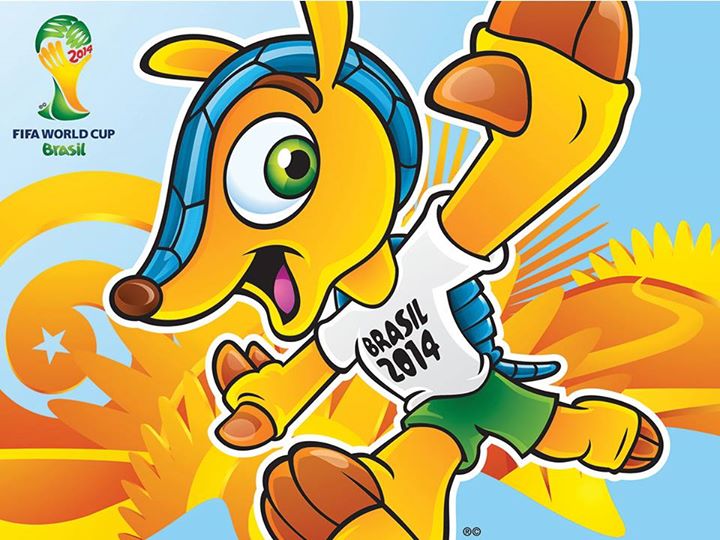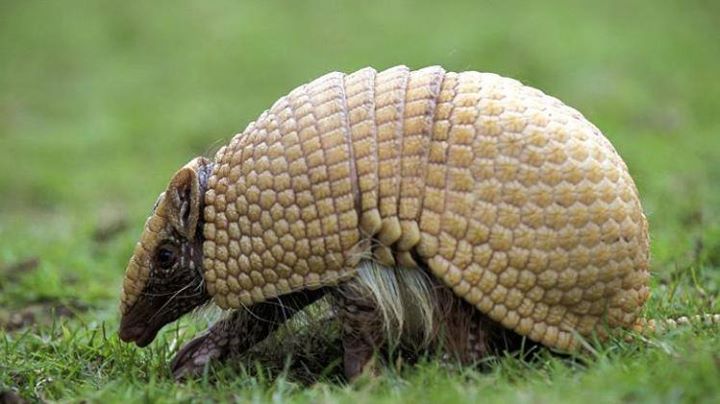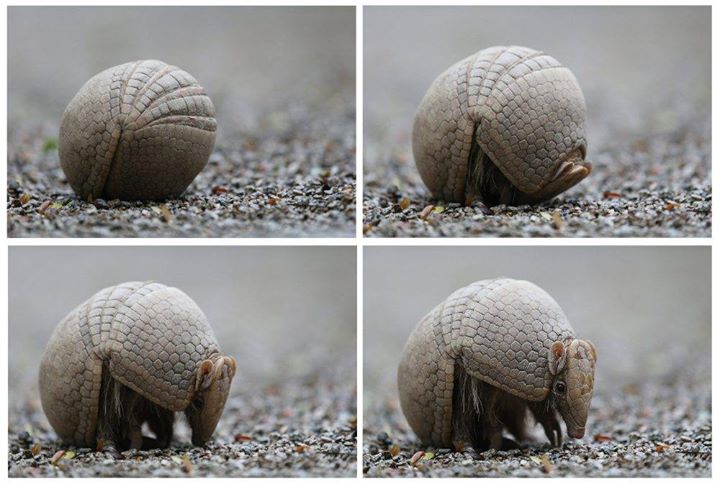Who is Fuleco? He’s a blue-armored armadillo and you’re going to be seeing a lot of him during the next month of World Cup action.

He’s the official FIFA World Cup mascot, and the name Fuleco derives from a blending of the Portuguese words for futebol (soccer) and ecologia (ecology). Another reason the armadillo, or tatu in Portuguese, is an apt choice is because when Fuleco’s species is startled or frightened, it rolls up into a tight, leathery ball that looks like a small soccer ball.

More than 1.7 million Brazilians, or 48 percent of those who voted, chose the name Fuleco over Zuzeco and Amijubi in a three-month naming poll.
Fuleco is based on the three-banded armadillo, an endangered species in Brazil. The Caatinga Association, a Brazilian environmental group, is using the animal’s selection as World Cup mascot to highlight the plight of real-life armadillos.

In the past 10 to 15 years, the number of three-banded armadillos is believed to have declined by a third. Not only is deforestation threatening the three-banded armadillo’s habitat, mainly in the dry forest region known as the Caatinga, but so is hunting. The tatu’s meat is considered a delicacy in Brazil’s northeast.
The Caatinga Association hopes that Fuleco’s star turn will help Brazilians and the government become more aware of saving the armadillo and its habitat from extinction.
The real three-bander is brownish tan with long claws and a hairy underbody. Fuleco, however, is cute and sports the colors of the Brazilian flag. He has a blue-and-yellow body and big green eyes and is tricked out in a Brazil jersey and green soccer shorts.
Fuleco’s blue body armor represents the sky and clear waters around Brazil — although probably not Guanabara Bay, which international sailors preparing for the 2016 Rio Olympics find to be a bit like trying to navigate through sludge.
From a giant plush Fuleco that greeted travelers this week at Rio’s international airport to armadillo head cushions, adult-size armadillo suits, plush toys, and PVC figurines to slippers, lunchboxes, key chains, stickers, bibs and more, the mascot comes in many iterations.
There’s even a signed digital 30x30-inch print of Fuleco on canvas by Romero Britto that is selling for $664.99 at the FIFA online store, and a World Cup song for the armadillo, Tatu Bom De Bola (The armadillo’s good with the ball).
Street fairs around Brazil also sport handcrafted knock-offs of the soccer-playing armadillo.
As the official story goes, Fuleco was born on Jan. 1, 2000, and was the very first three-banded tatu born in the new millennium. Since then he’s been busy going to sports, cultural and tourism events around the world and traveling with the FIFA World Cup Trophy Tour.
How Fuleco was made:
Brazilians seem to like him. FIFA, the international governing body for soccer, says he scored a 7.3 out of 10 on appeal and his association with sustainability and the environment is a message that resonates with Brazilian fans.
As fans poured off the commuter train at the Itaquerao Corinthians station for Thursday’s opening game, Brazil vs Croatia, they were greeted by an adult-sized Fuleco.
Renata Queiroz, 27, waited in line to snap a photo of her boyfriend Rodrigo Siqueira, 29, with the armadillo. “The mascot represents Brazil well,’’ she said. “It’s something very positive” that he was chosen.
Hundreds of people, including children and adults pushing babies in strollers, gathered for their chance to greet Fuleco.
Even grownups seemed fascinated. The mascot is “very creative,’’ said Rosana Mel, 47, from Florianopolis, as she waited to get a shot with Fuleco. “I think it was an excellent idea.”
Source: miamiherald.com